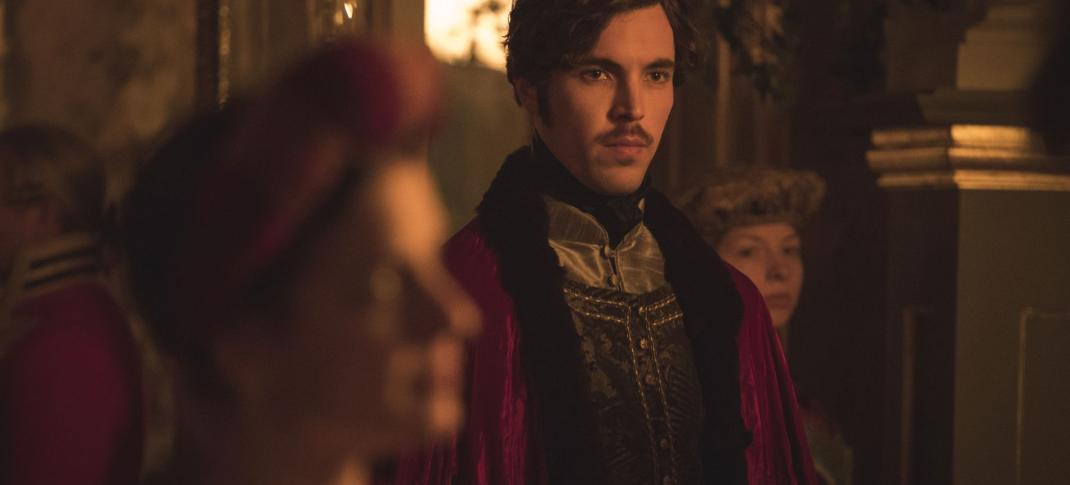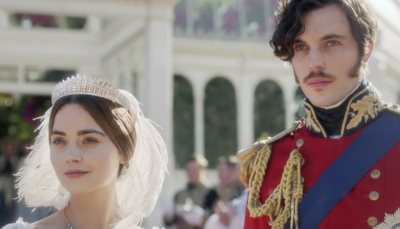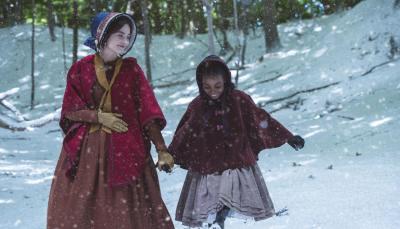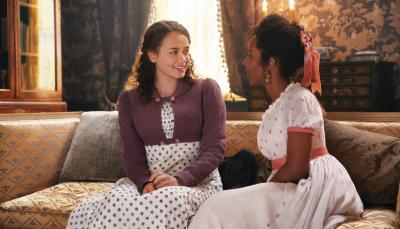Know Your 'Victoria' History: "Warp and Weft"/"The Sins of the Father"

Victoria, Season 2 MASTERPIECE on PBS Episode Two - "Warp and Weft" & "The Sins of the Father" Sunday, January 21, 2018 at 9pm ET (2 Hours) Discontent is growing in the country, and Victoria throws a costume ball in a misguided attempt to help the silk weavers of Spitalfields – but the spectacular event only exposes her naivety, and an unexpected grief finally forces her to put childish things away for good. Despite giving birth to a healthy Prince of Wales, Victoria finds herself paralyzed by an inexplicable sorrow. Meanwhile, a tragedy in Coburg plunges Albert into his own private torment. Shown: Tom Hughes as Albert For editorial use only. ©ITVStudios2017 for MASTERPIECE
Think you know the history of Queen Victoria's reign? Wondering how much of the history portrayed by PBS series Victoria is accurate? We run down the truth behind the drama in the latest episodes of Season 2, "Warp and Weft" and "Sins of the Father."
The English vs French Silk War
The first half of this week's episode focuses on the pleas by the Spitalfields Silk industry to have Queen Victoria sponsor their creations. In reality, by the 1840s, the silk industry from this area was already in long decline, and not just because of French imports. (Ironically the Spitalfields markets were established by protestant French refugees in the 1700s, but nevermind.) Riots in the 1760s had caused price controls to be established, giving those who created these fabrics little incentive to pay good wages or innovate when new machinery was introduced. Therefore by Victoria's time, the industry's collapse was already one of its own making, as most of those with talent had chosen to work in places with better wages and where mass production meant higher profits.
In that way, Victoria's comparison of raising a tariff on the Silk trade to the Corn Laws is off, though she's not wrong about the Corn Laws being passed because they had people in the House of Lords and the silk traders did not. At least, in years when the UK crops didn't fail, they were being produced at industry standards. But as viewers can imagine, the UK's ability to grow corn in comparison to say, France's or the United States' ability to do the same, showed Parliment to be acting out of self-interest instead of on behalf of the good of the people.
The People Riot While The Queen Parties
The costume ball we saw in the first half of this episode did actually happen. On May 12, 1842, history records that Victoria held an event at Buckingham Palace, the Bal Costumé, which over 2,000 people attended. Victoria and Albert did dress as Edward III and his consort Queen Philippa of Hainault. It was indeed held to benefit the declining Spitalfields silk industry, though it couldn't actually save them. There's a painting of the two of them in costume from the event, which you can see the show did stick to pretty well.
But the bit about Albert trying to stop Victoria because it could cause riots was nonsense. In fact, Albert was the one who pushed for the party to happen and was the reason a portrait was commissioned. And though there were many riots over the decades in the 1800s, this was not one of them, and this sort of Les Miserables-esque "commoners rage while the one percent party" scene was just created for drama.
The Death of Lord Melbourne
Like almost everything else involving Lord Melbourne, this is yet more disregarding of history in order to tell a story the public might be more interested in. From the beginning the show has sexed up the character, making this William Lamb younger, more handsome, and generally hotter than he was in real life. In truth, Victoria thought of Melbourne as a father figure, replacing the one she never had, and not as some sort of inappropriately sexualized professor like the show makes him into. (The show also did not tell the truth last season about the bedchamber crisis, which was actually Victoria refusing to change her ladies in waiting with the change in Parliment not because they were "her friends," but because Melbourne manipulated her into it.)
So of course, his death wouldn't be any more real, since nothing else about him has been. It is true that he suffered a stroke about 14 months after retirement, a fact which was alluded to via his symptoms described last week. Not long after that, his friendship with Victoria faded as he grew older, and she relied more on Albert, in a far more natural manner. Melbourne himself did not pass away until 1848, several years after the birth of Edward, not before.
Victoria's Post Partum Depression
Though the show is less than truthful about some of Victoria's values, making her more of a proto-feminist than she was, when it comes to the subject of babies, Victoria is absolutely correct. The real Victoria disliked being pregnant, all nine times. Her constant pregnancies were an annoying side effect of one of her favorite activities (sex with Albert) and a distraction from her job. She did have all nine babies though, and due to her wealth and Albert's modern sensibilities, all nine of them survived into adulthood, which was extraordinary for the period.
Did she have postpartum depression? Here's the thing: the entire concept of "postpartum" didn't exist back then, and so there is nothing in history to tell us directly if she suffered from anything of the sort because observers of the day would not think of such a thing as possible. But modern day historians who look back over the accounts have noticed a pattern in Victoria's behavior towards her children over the years. She didn't even attempt to breastfeed, she barely attempted to bond. (The entire arrangement where Elizabeth II saw her children twice a day, whether they needed it or not, stems from Victoria's schedule with her children.) This has led many to speculate that she indeed suffered from postpartum, which is where the show is drawing from.
As adults, it is obvious that Victoria loved her children, and she wrote them all piles and piles of letters. But as babies? Not so much.
Albert's Parentage

Who was Albert's father? Was it Ernest III, Duke of Saxe-Coburg-Saalfeld, or was his uncle (and Victoria's) Prince Leopold actually his father? And where in heaven's name did the show get this from?
It's a rumor that has fallen from the history books in the last few decades, but in truth, for years Albert's parentage was the subject of ugly rumors. One reason was his appearance: he looked very much like his mother, to the point that there was almost nothing about his father in his looks. Then there was the collapse of his parents' marriage, which happened very soon after he was born. Ernest III was a cruel man, who slept around, and unlike most women, Albert's mother Lousie wasn't going to just sit and take it. In the end, they divorced, which was very uncommon at the time, and which also added to the questions of whether the second son was even Ernest's.
Over the course of the years, the rumor has been randomly revived here and there, with historians noting there is circumstantial evidence to support it. (For instance Leopold *did* visit their household around nine months before Albert was born.) But other than that, there is zero evidence for it to be true, and considering that Leopold and Ernest were brothers, chances of a DNA test confirming one way or the other is low. If Leopold did claim fatherhood to Albert, neither of them ever let a word of it get out, and went to the grave with the truth.




